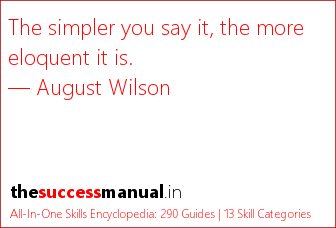Resume 101
Resume
Resume are called curriculum vitae (CV) in some places, which means 'course of life'. Of course, the modern meaning are different. When we say resume / curriculum vitae, we mean 'course of working life'. One of the best tips for an effective resume is for it to have the right keywords to get through the screeners, so mirror the language of the job posting.
Part 1: Parts of the standard resume (in order)
Header and Footer: Header contains your contact information- name, address, phone, email, website (useful for people in the creative fields, where they can show their work). Social media profiles (if they are relevant- Behance, Linkedin, Pinterest) go in the footer. They go in header only if they contain most of your relevant online presence/activity.
Make the employer's job easier by hyperlinking your email address so they can just cick on it to get in touch. Also put in active links (relevant Linkedin profile, social media links etc). Don't put in your full address, be safe, and just put in your city, state, and zip code.
Career summary: What you are, what you have done - modified for the job, to convince the employer of your value.
Skills Summary: Key abilities, especially the relevant ones. Keep less than 10 bullet points. Don't be vague. Use action verbs (see below). Highlight relevant skills from the job description, in 3-5 bullet points, each item in 'Adjective + Skill + Benefit' style. (E.g. 'Created successful online branding campaigns for phone brands to reach relevant online audiences at 60% lower cost' )
Work Experience: Key successes in jobs. In PAR format: Problem, Action, Result- E.g. 'The team was falling behind schedule (problem). I plugged the gaps (action) and productivity increased (result).' Another useful style for telling your success stories: “I did … and as a result ...”
Please be reasonable with your accomplishments. People have taken to the trend of overblown achievements, making it hard for employer/hiring manager to verify. Better work experience is also shown by a steady progression in level of job position.
Education: Your qualifications, especially the relevant stuff, and any spectacular grade. Format: Name of institution, location, major/degree
Awards: Accolades and recognition.
Professional Membership: Of institutes and associations.
Activities: Non-job actions undertaken.
Personal Information: Hobbies, social- Think twice before putting anything there.
Part 2: The three main kinds of resume
1. Chronological resume: The most common resume format, where we list our work experience in reverse chronological format, with the most recent job on top. Recruiters, HR people, Online resume databases/screeners/Applicant Tracking Systems (ATS) expect this style. Most of the time.
2. Functional resume: This format of resume is also known as the 'Skills' resume. Since this kind of resume focuses more on skills (and achievements) than work experience, people with little work experience (e.g. fresh grads) or big gaps in career (layoff, sabbatical etc.) use this to highlight what they do best, highlighting their successes with skills in a variety of areas- side projects, internships, volunteer work etc.
3. The hybrid style resume: Here, you follow the chronological format, but you also list the key skills you used in each job in bullet points. This deals with the screeners of all types, as well as highlighting your multi-track work experience.
❤ If you liked this, consider supporting us by checking out Tiny Skills - 250+ Top Work & Personal Skills Made Easy